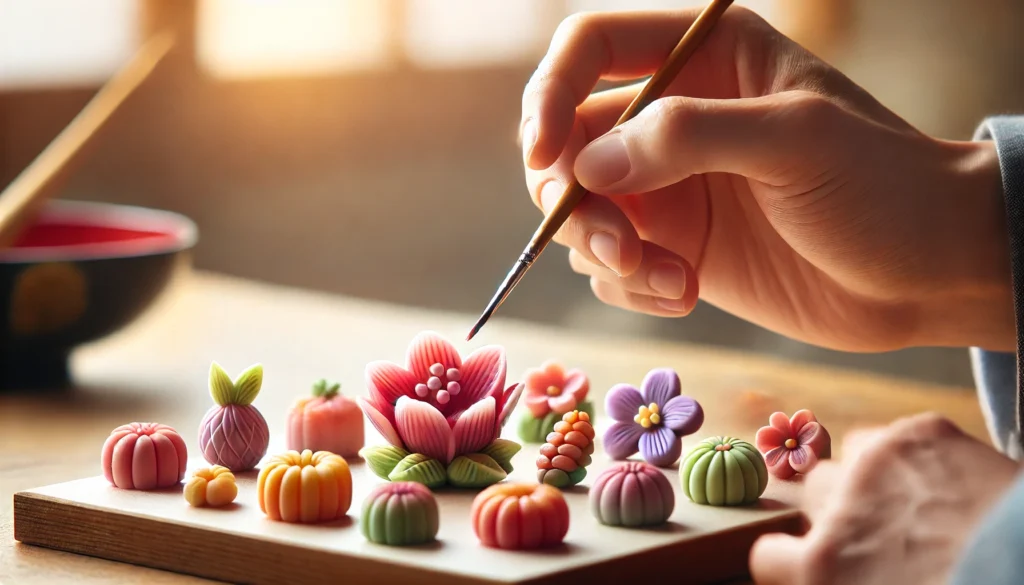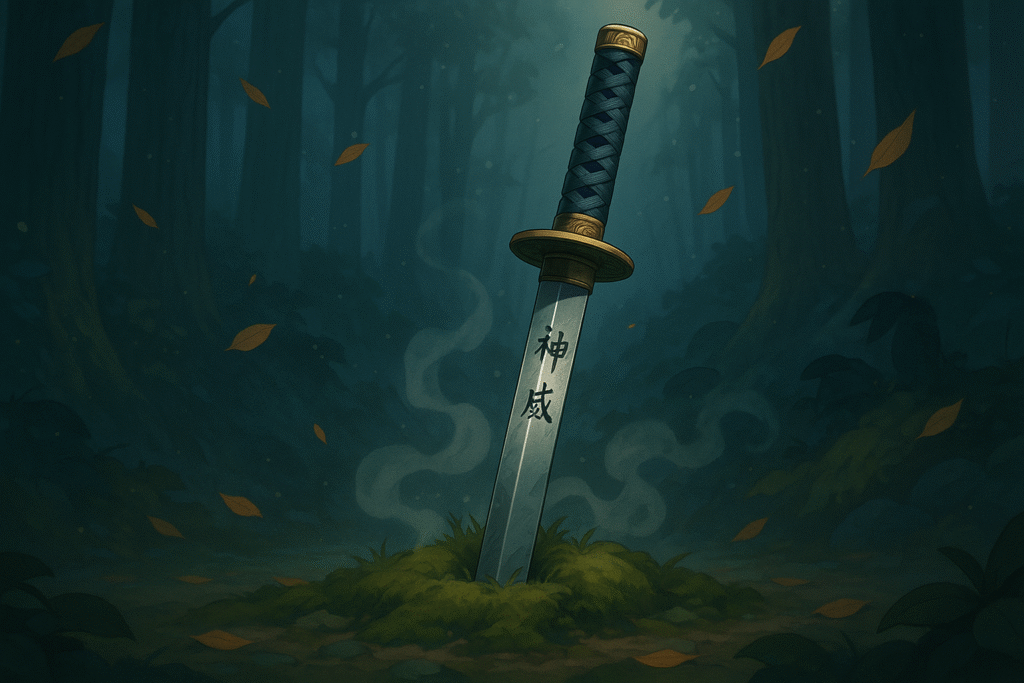Have you ever admired those delicate, colorful Japanese sweets that seem too beautiful to eat? The ones that look like miniature works of art, shaped like seasonal flowers and fruits? These exquisite creations are called nerikiri wagashi, and believe it or not, you can make them in your own kitchen with the right ingredients and techniques.
As someone who spent years traveling between Tokyo and Los Angeles, I’ve fallen in love with the meditative process of creating these edible art pieces. Today, I’m sharing my tried-and-tested nerikiri wagashi recipe that will help you bring a touch of Japanese tradition to your home.
Want to explore Japan’s culture?
Discover Japan’s rich culture, traditions, and hidden gems with our expertly crafted guides. Get insider tips on travel, food, and history. All for free!
What Is Nerikiri Wagashi?
Nerikiri wagashi (練り切り和菓子) is a traditional Japanese confection with a history dating back centuries. The word “nerikiri” refers to the technique of kneading and cutting the dough, while “wagashi” is the broader term for Japanese sweets.
These confections are more than just treats—they’re edible art forms that reflect Japan’s deep appreciation for seasonality and nature. Typically served alongside matcha during tea ceremonies, nerikiri wagashi creates a harmonious balance between the bitter tea and sweet confection.
What makes nerikiri truly special is its moldable texture—similar to a soft clay or dough—that allows artisans to craft intricate designs representing seasonal motifs. Spring cherry blossoms, summer leaves, autumn chrysanthemums, and winter plum blossoms are just a few popular designs you’ll see throughout the year.
Essential Ingredients for Nerikiri Wagashi Recipe
To make nerikiri wagashi at home, you’ll need these key ingredients:
- White bean paste (shiro-an): The primary ingredient that forms the base of the dough
- Shiratamako: A type of glutinous rice flour that gives nerikiri its characteristic texture
- Water: To combine with the shiratamako
- Red bean paste (anko): For the filling inside the nerikiri
- Food coloring: Preferably gel or powder form for vibrant colors without altering texture

How to Make Nerikiri Wagashi: Step-by-Step Instructions
Creating these beautiful confections is easier than you might think. Follow this nerikiri wagashi recipe to make approximately 4 pieces:
Ingredients:
- 100g white bean paste (about 6.5 tablespoons)
- 5g shiratamako (about 1.2 teaspoons)
- 10g water (about 2.5 teaspoons)
- 60g red bean paste (about 4 tablespoons)
- Gel food coloring of your choice
Instructions:
- Prepare the shiratamako mixture
- In a non-stick frying pan, combine the shiratamako and water, mixing well to eliminate any lumps
- Turn the heat to medium-low and cook while gently stirring until the mixture changes from white to translucent
- Create the nerikiri dough
- Add the white bean paste to the pan
- Use a spatula to thoroughly combine the shiratamako mixture and bean paste
- Continue cooking while stirring until the mixture loses its stickiness and no longer clings to the pan
- Remove from heat and allow to cool slightly (it will firm up further as it cools)
- Shape and fill your nerikiri
- Divide the nerikiri dough into portions (about 25g or 1¾ tablespoons each)
- Flatten each portion and place about 15g (3.5 teaspoons) of red bean paste in the center
- Wrap the dough around the filling and seal completely
- Shape into your desired form (sakura flowers are traditional for spring)
- Add color details using a small brush dipped in food coloring
- Serve and enjoy
- Arrange your finished nerikiri wagashi on a plate
- Serve alongside freshly prepared green tea for an authentic experience
Tips for Perfecting Your Nerikiri Wagashi
Making wagashi nerikiri might seem challenging at first, but these tips will help you master the art:
1. Get the Texture Right
The dough consistency is crucial for successful nerikiri wagashi cooking. If it’s too wet, it will stick to your hands and tools; if it’s too dry, it will crack when shaped. When starting out, aim for a slightly drier dough until you get comfortable working with it.
2. Use the Right Tools
While traditional wagashi artisans use specialized tools, beginners can start with:
- Small silicone spatulas
- Toothpicks for detailing
- Small paintbrushes for applying food coloring
- Plastic wrap to prevent drying
3. Mind Your Food Coloring
As mentioned in the nerikiri wagashi recipe above, always use gel or powder food coloring rather than liquid. Liquid coloring adds unwanted moisture that can ruin your dough’s consistency.
4. Practice Simple Shapes First
Before attempting complex designs, master basic shapes like round balls, ovals, and simple flowers. As you become more confident, you can graduate to more intricate designs like those featured in my 15 Japanese Desserts article.
Love Japan? Stay in the Loop!
Get the best of Japan straight to your inbox: language, culture & travel insights!
The Cultural Significance of Nerikiri Wagashi
Nerikiri wagashi isn’t just a sweet treat—it’s a cultural experience. In Japan, wagashi represents:
- Seasonality: Designs change throughout the year to reflect seasonal motifs
- Mindfulness: The process of making wagashi requires focus and attention to detail
- Harmony: The balance between the sweet wagashi and bitter matcha creates a complete experience
When I first learned to make nerikiri wagashi during cherry blossom season in Tokyo, I was struck by how the entire process felt like a meditation—from kneading the dough to carefully shaping each petal. This experience connects modern practitioners to centuries of tradition.
Storing and Serving Your Nerikiri Wagashi
For the best nerikiri wagashi experience:
- Freshness: Nerikiri tastes best when consumed fresh, ideally on the day it’s made
- Storage: If needed, store in the refrigerator for up to 3 days in an airtight container
- Serving: Allow refrigerated nerikiri to come to room temperature before serving
- Presentation: Serve on small, minimalist plates to highlight the wagashi’s beauty

Frequently Asked Questions About Nerikiri Wagashi Recipe
Can I make white bean paste (shiro-an) at home?
Yes, you can make white bean paste at home using lima beans and sugar. Soak dried lima beans overnight, cook until soft, then blend with sugar (typically 50% of the beans’ weight) and strain for a smooth paste.
Can I substitute shiratamako with another ingredient?
If you can’t find shiratamako, you can substitute it with mochiko (another type of glutinous rice flour). However, the texture may be slightly different, and cooking time might increase.
How do I prevent my nerikiri dough from drying out while working?
Keep a slightly damp cloth over any dough you’re not actively working with. This maintains moisture without making the dough too wet.
Can nerikiri wagashi be frozen?
While technically possible, freezing is not recommended as it can affect the texture and appearance of the nerikiri.
What’s the difference between nerikiri and other types of wagashi?
Nerikiri is distinguished by its moldable, clay-like consistency that allows for detailed shaping. Other wagashi types include mochi (pounded rice cakes), yokan (jellied desserts), and dorayaki (red bean pancake sandwiches).
Embrace the Art of Wagashi Nerikiri
Creating a nerikiri wagashi recipe at home connects you to centuries of Japanese culinary tradition. The process is as rewarding as the result—a mindful practice that yields beautiful, delicious treats reflecting nature’s seasonal beauty.
Whether you’re preparing for a Japanese-themed gathering, looking to expand your culinary skills, or simply want to experience this unique art form, nerikiri wagashi offers a creative outlet that engages all your senses.
For more Japanese recipes and cultural insights, don’t forget to check out my resources page where you can find free guides to enhance your Japanese cooking journey. From kitchen tools to ingredient recommendations, these resources will help you create authentic Japanese experiences in your own home.
Have you tried making nerikiri wagashi? Share your creations and experiences in the comments below!
Join Fellow Japan Enthousiasts!
Ask questions, get study tips, and take part in weekly challenges. Join a community of motivated learners exploring both the language and culture of Japan!




